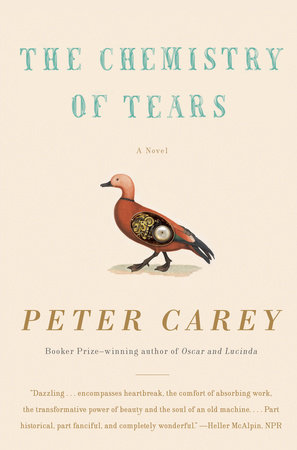The Chemistry of Tears Reader’s Guide
By Peter Carey


1. We are told the story through two different narrators: Catherine Gehrig and Henry Brandling. Are they reliable?
2. How are the lives of Catherine and Henry similar? How do they differ, aside from their time periods and locations?
3. Why do you think Catherine is drawn to Henry’s story with such curiosity? Do you think her state of grief affects the way she reacts to his journals? If so, how?
4. How do grief and loss function in the novel as a whole? What are some of the ways Catherine and Henry—or any of the other characters—cope with grief in their lives? How does this affect the mood and atmosphere of the novel?
5. Catherine is a horologist, used to dealing with many fine mechanical parts. How is her personality suited to this? How is it not?
6. Despite difficult circumstances at home, Henry Brandling begins his trek as an optimist, even saying “Brandling would see the glass half full even when it lay in shards around his feet” (p. 55). Do you think Henry is naive? Or is this a useful attitude for him to take in the face of hardships?
7. Carl emerges as an interesting and important character, particularly to Henry. How do Henry, Herr Sumper, and Frau Helga each view Carl? How do you view Carl?
8. Were you surprised when Henry violently beats Sumper (p. 93)? Were there any earlier indications that Henry would be prone to such rage? How would you characterize Henry’s and Sumper’s reactions the following day?
9. What reactions did you have to the scene between Catherine and her lover’s sons? What do you make of Noah and Angus’s gift to Catherine?
10. How would you characterize Catherine’s relationship with Amanda? How does it compare with Henry’s relationship with Sumper?
11. Eric Croft plays a central role in many aspects of Catherine’s life, which leads her to call him “an awful meddler” (p. 176). Do you agree or disagree? Do you think his motives are selfless, or does he have his own agenda?
12. What do you think the title The Chemistry of Tears might refer to?
Just for joining you’ll get personalized recommendations on your dashboard daily and features only for members.
Find Out More Join Now Sign In